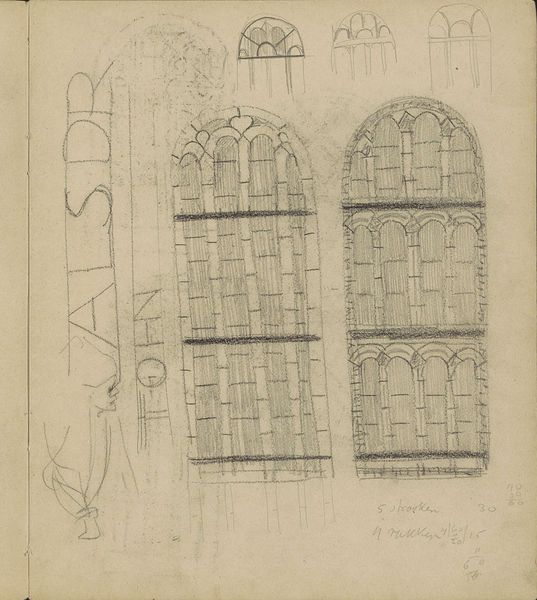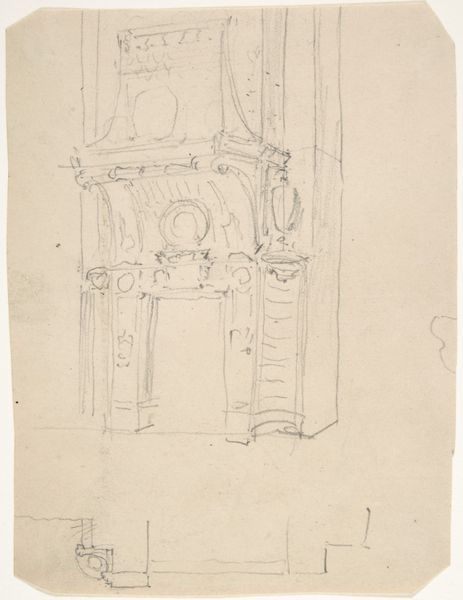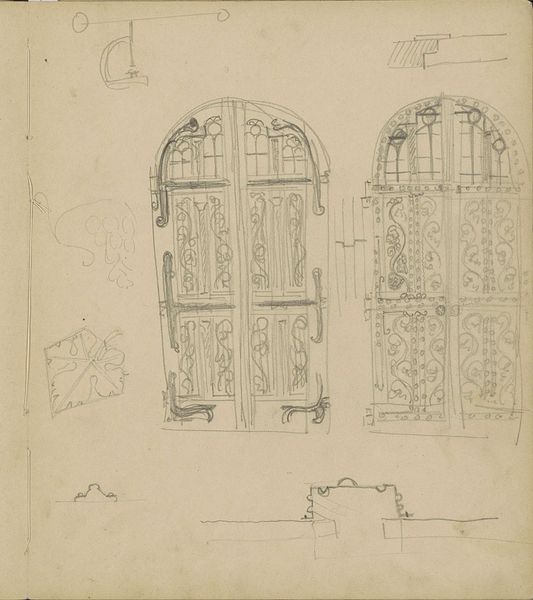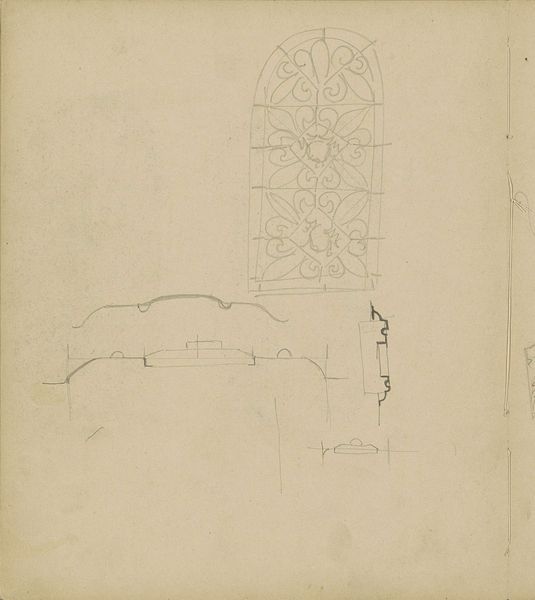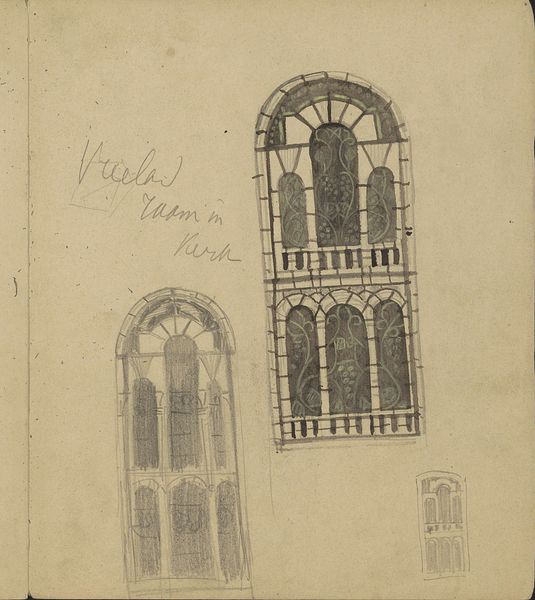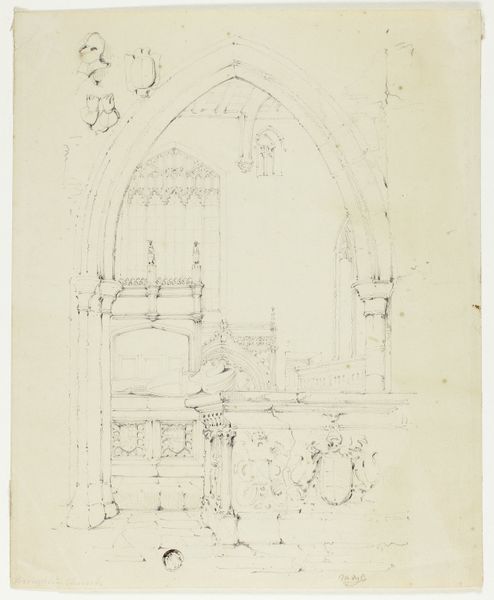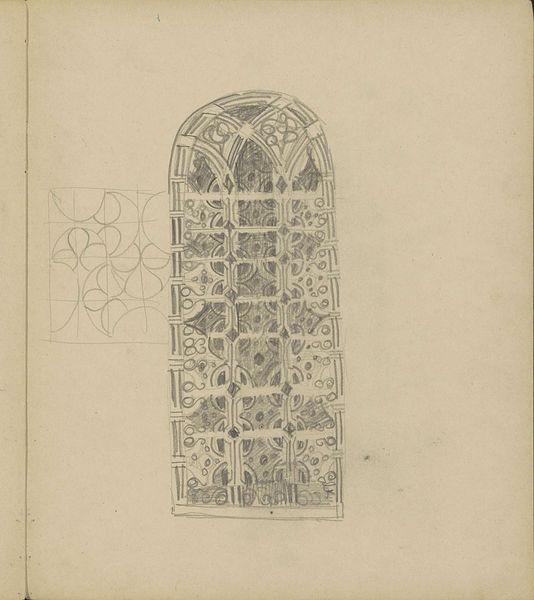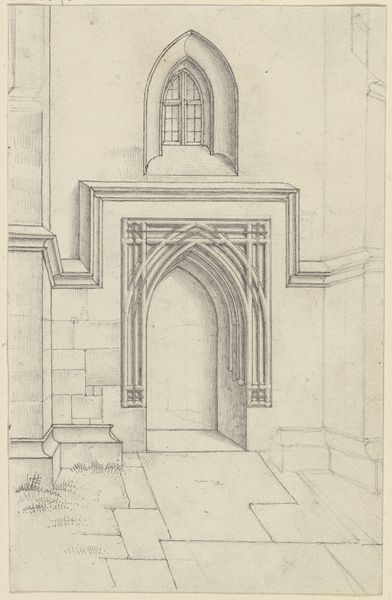
drawing, pencil, architecture
#
drawing
#
amateur sketch
#
aged paper
#
quirky sketch
#
sketch book
#
form
#
personal sketchbook
#
idea generation sketch
#
sketchwork
#
pencil
#
line
#
sketchbook drawing
#
sketchbook art
#
architecture
#
initial sketch
Copyright: Rijks Museum: Open Domain
Curator: Welcome. Today we are looking at “Kerkramen,” which translates to Church Windows, a pencil drawing by Carel Adolph Lion Cachet, circa 1905-1906, now residing in the Rijksmuseum. Editor: The initial feeling I get is that of a kind of contemplative searching. It's pale, with these tentative lines feeling almost ghost-like on the aged paper. It evokes a sense of quiet exploration. Curator: Indeed. It’s fascinating how Cachet utilizes line here. Notice the stark simplicity—a focus on essential form. There's a directness to the expression that speaks to architectural fundamentals; the skeletal geometries upon which grand structures are built. The cross-hatching and variations in line weight help delineate these differing window styles and shapes. Editor: Yet I can't help but think about what these windows would "see," figuratively speaking. This period was rife with social change and growing anxieties surrounding class and religious institutions in the Netherlands. Was Cachet wrestling with his own faith? Was he part of it, critical of it, ambivalent to it? It’s a moment where architectural grandeur met deep questioning, especially amidst societal shifts. Curator: While interesting, these projections might obscure our visual understanding of what the artwork tries to perform aesthetically. It would be very helpful to look at the contrast between those sketch lines, where he uses shading to define space, or leaves bare areas as form, offering contrast, a spatial awareness that defies mere function, and instead evokes contemplation within structure. Editor: I acknowledge the strength in formal arrangement. Still, it would seem strange to ignore the religious spaces in which these windows were or would be installed. These places weren't merely buildings; they symbolized power, community, faith—arenas for sermons that shaped minds and doctrines which regulated entire lives. If this is an artistic investigation, how does it acknowledge or subvert it? Curator: Perhaps the subversion is in the abstraction itself. By deconstructing the windows to their basic geometric shapes, Cachet liberates them from their inherent religious context. Editor: So even these drawings in their time—with their shapes and shading, their place and purpose within societal turbulence, act as another means through which art challenges and engages? Curator: Precisely. Cachet's focused strokes beckon, leading us into new appreciation for line and design. Editor: Ultimately then, it brings forth that vital dialogue where art exists not solely in visual terms, but its relation to societal pulse.
Comments
No comments
Be the first to comment and join the conversation on the ultimate creative platform.

